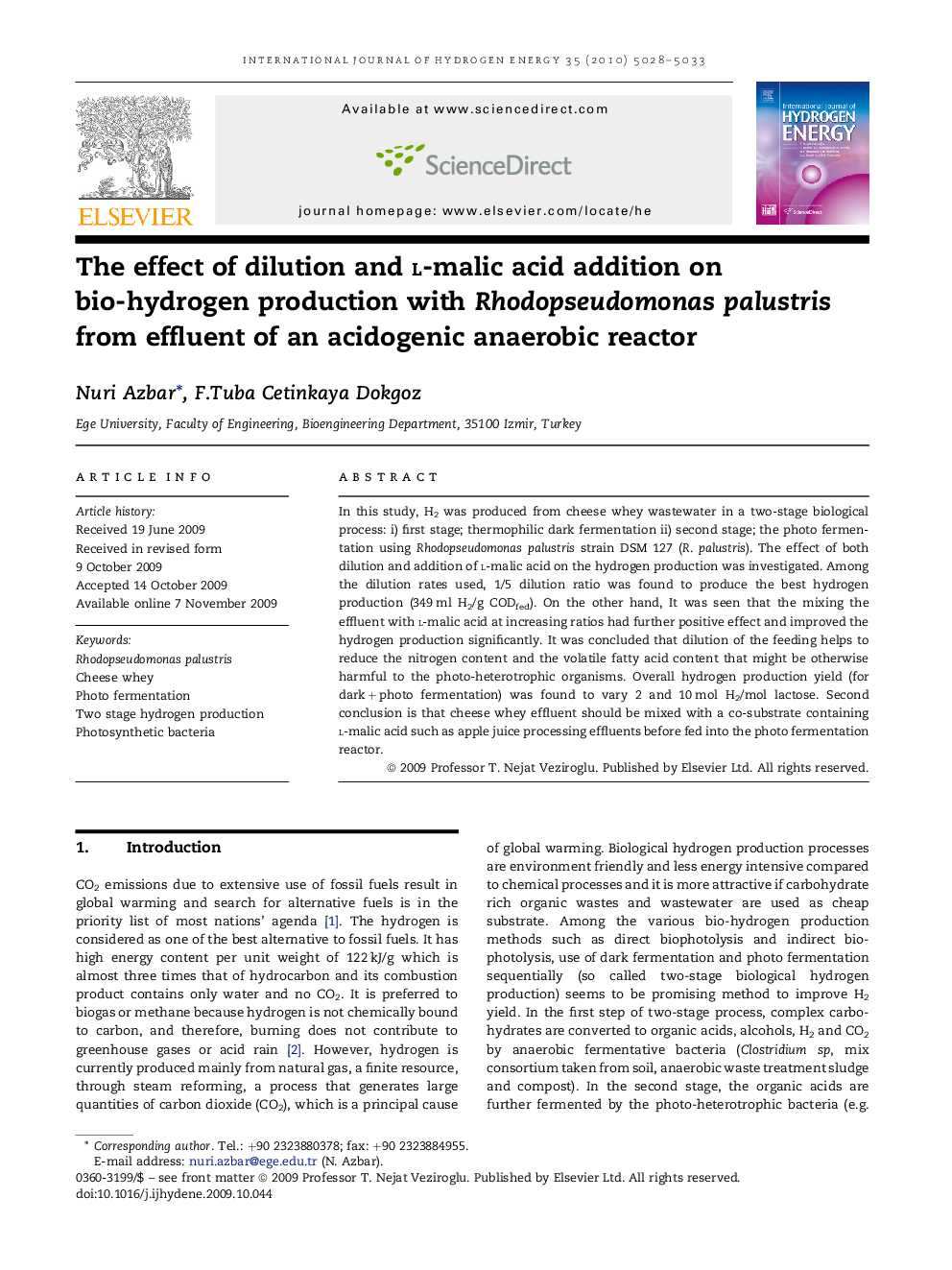| Article ID | Journal | Published Year | Pages | File Type |
|---|---|---|---|---|
| 1282850 | International Journal of Hydrogen Energy | 2010 | 6 Pages |
In this study, H2 was produced from cheese whey wastewater in a two-stage biological process: i) first stage; thermophilic dark fermentation ii) second stage; the photo fermentation using Rhodopseudomonas palustris strain DSM 127 (R. palustris). The effect of both dilution and addition of l-malic acid on the hydrogen production was investigated. Among the dilution rates used, 1/5 dilution ratio was found to produce the best hydrogen production (349 ml H2/g CODfed). On the other hand, It was seen that the mixing the effluent with l-malic acid at increasing ratios had further positive effect and improved the hydrogen production significantly. It was concluded that dilution of the feeding helps to reduce the nitrogen content and the volatile fatty acid content that might be otherwise harmful to the photo-heterotrophic organisms. Overall hydrogen production yield (for dark + photo fermentation) was found to vary 2 and 10 mol H2/mol lactose. Second conclusion is that cheese whey effluent should be mixed with a co-substrate containing l-malic acid such as apple juice processing effluents before fed into the photo fermentation reactor.
